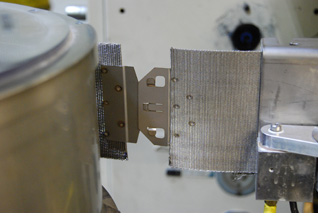

July 25 2018

In last three articles of the “Factors When Choosing Screen” series we described the three types of weave pattern, an explanation on the importance of mesh size, and how the quality of the screen plays a critical role. In this last installment we’ll look at a value-added feature that any good quality screen should offer.
As we already discussed, weave pattern, mesh size, and the screen quality are important considerations when choosing screen for continuous belt screen changers. However, are there any added features that could be beneficial when choosing screen? Well, what if there were a way to reduce operational downtime when the RDW (Reverse Dutch Weave) screen is depleted?
At some point a spent roll of screen will need to be replaced to continue the melt filtration operation. During this time the extruder must be shut down so every minute wasted during this process results in loss of revenue. Traditionally this process can take 30 minutes or more to remove the remaining spent screen by hand. To do this an operator would need to manually pull the spent screen from the outlet of the screen changer. To install the fresh screen roll it is good practice to have a second operator on the inlet side feeding the fresh screen while the spent screen is being removed. This is to reduce the opportunity of the inlet and outlet chambers freezing the cavity created from the removal of the spent screen which would result in additional downtime. This practice absorbs two or more operators, introduces safety concerns, and is time consuming.
Listening to our customer base, Parkinson Technologies’ Key Filters brand introduced ScreenLync™, a first-of-its kind feature that adds safety and efficiency to continuous belt screen changer operation. This innovation enables the operator to clip a new full RDW roll to the end of the spent RDW roll allowing a roll change to be accomplished in under 5 minutes, thereby reducing operational downtime. By clipping each end of the RDW rolls together, a single operator can pull the fresh roll into the screen changer without the need of another operator.
Using this technology in conjunction with the model KCH’s unique screen puller system, which is attached to the outlet of the melt chamber to draw fresh screen into the melt stream, eliminates the need to manually pull the screen.This technology not only eliminates the need for two operators but allows for a screen change without the safety concerns of manually pulling on the screen. Available on all roll sizes this value-added feature has been embraced by many melt filtration operations.
We hope this four-part series was helpful to you in understand the importance of RDW screen weave pattern, mesh size, quality, and the ScreenLync value-added feature for use in continuous belt screen changers. We are confident that with the knowledge of understanding which screen is best for your application, your operation should run safely and efficiently.